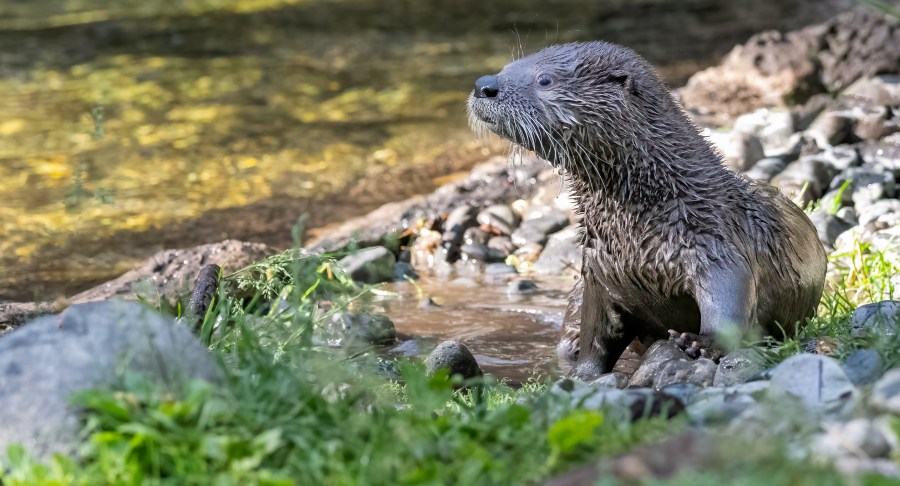PORTLAND, Ore. (KOIN) – The High Desert Museum’s new, baby North American river otter is about to make his public debut.
The otter pup, which was found emaciated and severely dehydrated on a golf course near Sunriver in May has been kept behind the scenes for the last several months. But on Wednesday, he’ll join the museum’s other two otters in the Autzen Otter Exhibit where visitors can see him.
“North American river otters are so playful and engaging, and they have so much to teach us about riparian ecosystems,” said Museum Executive Director Dr. Dana Whitelaw. “We’re excited for the public to share the excitement of welcoming this new addition to the Museum.”
The male pup is now approximately five and a half months old and has yet to be named.
On Wednesday, at 2:30 p.m., visitors will be able to catch their first glimpses of the pup in the exhibit. He’ll join the museum’s other two male otters: Brook and Pitch. Naturalists will be at an Otter Fodder Interpretation Station to share facts about the animal and allow guests to see pelts, skulls and other interactive items.
The naturalists will be at the interpretation station inside the Autzen Otter Exhibit regularly through October from 10 a.m. to 1 p.m.Daily talks will take place at the exhibit at 1 p.m. through November.
While this will be the first time the public can see the new pup in the exhibit, it’s not the first time the pup has met the other two otters. He was introduced to them in recent months so they could all grow accustomed to one another and so the pup could get used to the habitat.
“We supervised early interactions while the baby otter was small to make sure everyone stayed safe,” museum curator of wildlife Jon Nelson said. “He’s not quite as big as the older otters yet, but they are all getting along well and enjoying playing, eating and napping together. They do quite a bit of roughhousing, and the baby holds his own with Pitch and Brook.”

The baby otter was also given time to practice swimming before joining the habitat. Wildlife curators helped him splash in the museum’s stream and in a play pool.
The pup weighed 2.4 pounds when he arrived at the museum in May. Initially, wildlife officials hoped the pup’s stay at the High Desert Museum in Bend would be temporary. They tried to find the pup’s mother but were unsuccessful. Eventually, the Oregon Department of Fish and Wildlife determined the otter should remain with the museum.
“We don’t know exactly what happened to this otter, although we do know that without his parents he wouldn’t have survived in the wild,” Nelson said at the time. “This was a unique situation where this otter pup does appear to have been legitimately orphaned.”
Whitelaw said caring for a young otter is intense work, but the wildlife team has done an incredible job with bottle feeding and supervising him.
Pitch, one of the other otters, is about 5 years old and Brook is approximately 10 years old.
The animals serve to help educate museum visitors.
The museum reminds the public to leave young animals alone if they’re found by themselves in nature. Often, the parent has only left them temporarily and plans to return. The best thing to do is to leave the animal there and contact a local ODFW office to report it.
